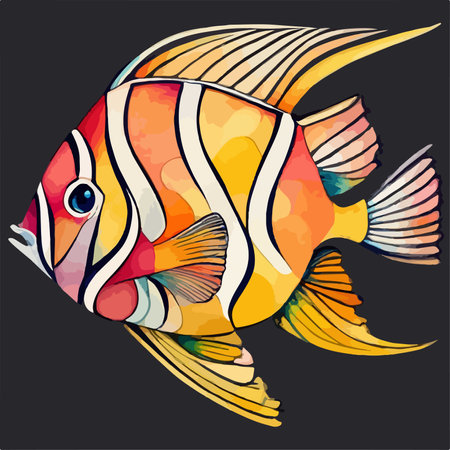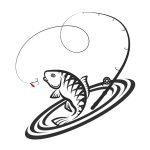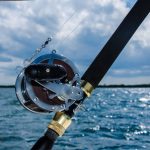1. Introduction to Custom Lure Making
Across the United States, more and more anglers are diving into the hands-on world of custom lure making. This DIY trend has become a growing part of American fishing culture, giving hobbyists and pros alike a creative way to improve their chances on the water while adding a personal touch to their gear.
Custom lure crafting isn’t just about making something that looks cool—though that’s definitely part of the fun. It’s also about designing baits that match local fishing conditions, mimic specific forage species, and suit your unique fishing style. Whether you’re chasing largemouth bass in Texas or trout in the Rockies, building your own lures gives you full control over how they perform.
Why More Anglers Are Customizing Their Lures
There are several reasons why custom lure making is catching on across the U.S.:
| Benefit | Description |
|---|---|
| Personalization | Create baits with colors, shapes, and actions tailored to your target fish and local waters. |
| Cost Savings | Over time, making your own lures can be more affordable than buying premium models off the shelf. |
| Performance Tuning | You can adjust buoyancy, weight placement, and action to fine-tune how your lure behaves. |
| Creative Outlet | Lure making combines art and function—it’s a fun way to express yourself while building effective tackle. |
The Evolution of Lure Crafting in America
In the past, most anglers relied solely on store-bought baits. But thanks to online tutorials, social media groups, and easy access to tools and materials, more people are trying their hand at building lures from scratch. What started as a niche hobby has grown into an active community where makers share ideas, trade designs, and even sell their creations at local markets or online platforms like Etsy and eBay.
Popular Types of DIY Lures in the U.S.
- Crankbaits – Designed for precise depth control and wobble action
- Soft Plastics – Molded in custom colors and shapes for finesse fishing
- Spinnerbaits – Great for targeting bass with flash and vibration
- Topwater Lures – Built for exciting surface strikes with unique paint jobs
No matter what species youre targeting or where you fish, custom lure making adds a whole new level of satisfaction to every catch. In the next sections, we’ll dive into how to design your own lures from start to finish—covering everything from shaping bodies to painting patterns and tuning them for perfect action.
2. Designing Effective Lures for U.S. Waters
When it comes to custom lure making in the U.S., designing a bait that works well isnt just about creativity—its about understanding the fish youre targeting, where youre fishing, and what local anglers are using. The design process should start with identifying your target species and then tailoring your lures size, shape, color, and action to match the conditions.
Target Species and Their Preferences
Each type of fish has its own feeding habits and preferences. Whether youre chasing largemouth bass in Texas or redfish in Florida, your lure should mimic the prey that fish expect to see in their environment.
| Species | Preferred Prey | Lure Size | Recommended Action |
|---|---|---|---|
| Largemouth Bass | Crawfish, shad, frogs | 2-5 inches | Slow wobble, erratic twitch |
| Smallmouth Bass | Minnows, crayfish | 2-4 inches | Tight wobble, quick darting |
| Northern Pike | Baitfish, frogs, small mammals | 4-8 inches | Wide wobble, steady retrieve |
| Redfish (Red Drum) | Shrimp, crabs, mullet | 3-5 inches | Bounce along bottom, slow roll |
| Striped Bass | Bunker, herring, eels | 4-7 inches | S-shaped swim, steady or jerky retrieve |
Adapting to Local Fishing Conditions
The environment where youre fishing plays a big role in lure design. In murky water or low-light conditions, brighter colors and louder rattles can help your lure stand out. In clear water with heavy pressure from other anglers, natural colors and subtle actions work better.
Lure Design Tips by Water Type:
| Water Type | Lure Color Suggestions | Action Style |
|---|---|---|
| Muddy Lakes (e.g., Mississippi River backwaters) | Chartreuse, black-blue, firetiger patterns | Loud rattles, wide wobble, vibration-heavy designs |
| Clear Lakes (e.g., Lake Tahoe) | Naturals like green pumpkin, watermelon seed, silver shad patterns | Tight action with subtle movements; finesse-style lures work best |
| Saltwater Flats (e.g., Florida Keys) | Pearl white, bone, shrimp pinks for realism in shallow water | Smooth gliding or popping topwater actions; weedless rigging important for grass beds |
Regional Trends Across the U.S.
Lure popularity also varies by region. Paying attention to what local anglers are using can give you an edge when designing your own baits. Heres a quick overview of popular trends in different parts of the country:
| Region | Popular Lure Types | Main Target Species |
|---|---|---|
| Southeast (Florida, Georgia) | Spooning jigs, soft plastic jerkbaits for salt and freshwater use | Bass, redfish, snook |
| Northeast (New York to Maine) | Trolling plugs and eels for stripers; finesse worms for smallmouths inland | Striped bass, trout, smallmouth bass |
| Midwest (Great Lakes region) | Crawler harnesses for walleye; crankbaits for bass and pike | Walleye, northern pike, largemouth bass |
| West Coast (California to Washington) | Swimbaits for trophy bass; squid imitations for surf fishing and rockfish offshore | Largemouth bass, halibut, rockfish |
| Southwest (Texas & surrounding states) | Lipless crankbaits and frogs for heavy cover fishing; spinnerbaits during windy days on reservoirs like Lake Fork or Falcon Lake | Largemouth bass, catfish, garfish |
Create With Purpose—and Experiment!
The beauty of custom lure making is that you’re not limited by what’s hanging on store shelves. Use these guidelines as starting points—then tweak body shapes, weight placement, hook positions, and paint jobs until they reflect your personal style and meet your local needs. Keep a journal of what works in each spot so you can refine future designs even more effectively.

3. Painting and Finishing Techniques
Painting your custom fishing lure is where the magic really happens — it’s your chance to bring your design to life and make it look like the real baitfish that American game fish love to chase. This part of the process is all about creativity, precision, and durability.
Airbrushing: A Must-Have Skill
Airbrushing is one of the most popular techniques for painting lures in the U.S., and for good reason. It allows you to apply smooth, even coats and blend colors naturally. Whether youre mimicking a rainbow trout in Colorado or a shad in the South, an airbrush helps you create lifelike patterns with subtle fades and highlights.
Basic Airbrushing Tips:
- Start with a white base coat for better color visibility
- Use light, multiple passes instead of one heavy spray
- Clean your airbrush frequently to avoid clogs
- Practice on scrap material before spraying your lure
Stenciling for Details
Stencils are great for adding specific patterns like gill plates, scales, or stripes. You can buy pre-made stencils or cut your own using stencil film or masking tape. Position them carefully and use light airbrush sprays to avoid paint bleed.
Color Matching with Native Baitfish
To increase your chances of catching fish, match your lure’s colors and patterns to local forage species. Heres a quick guide to common U.S. baitfish and recommended lure colors:
| Baitfish Species | Region Found | Suggested Lure Colors |
|---|---|---|
| Shad | Southeast, Midwest | Pearl white, silver, blue back |
| Bluegill | Nationwide (lakes & ponds) | Green pumpkin, orange belly, dark bars |
| Rainbow Trout | Western U.S., stocked lakes | Purple back, pink stripe, silver body |
| Crawfish (Crayfish) | Nationwide (rocky bottoms) | Brown, red-orange, black accents |
Sealing and Finishing for Durability
A beautifully painted lure wont last long without proper sealing. Use a clear topcoat like epoxy or UV-cure resin to protect against water damage and hook rash. Apply at least two coats and let each cure fully before handling.
Popular Clear Coat Options:
- Epoxy Resin: Extremely durable but requires careful mixing and curing time.
- UV-Cure Resin: Cures quickly under UV light; great for fast turnarounds.
- Acrylic Spray Sealant: Easy to apply but less durable over time.
Pro Tip:
If youre planning to sell or gift your lures, always test the durability by soaking them in water overnight and checking for any peeling or fading.
A well-painted and sealed lure doesnt just look good — it catches more fish because it convinces predators theyre chasing real prey. Take your time with this step, experiment with different styles, and have fun creating something uniquely yours.
4. Tuning Your Bait for Optimal Action
Once youve designed and painted your custom lure, its time to dial in the performance by tuning it. Whether youre working with a crankbait, topwater, or jerkbait, proper tuning ensures your bait runs true and behaves the way you want it to in the water. Heres how to get it just right.
Why Tuning Matters
Tuning affects how your bait swims, dives, and reacts. A properly tuned lure will track straight, reach its intended depth quickly, and trigger more strikes. An out-of-tune bait might veer off course or move unnaturally, making it less effective at catching fish.
Basic Tuning Tools
You don’t need fancy gear to tune your lures—just a few simple tools:
- Needle-nose pliers
- Small file or sandpaper
- Split ring pliers (optional but helpful)
- A small container of water or access to a pond/lake for testing
How to Tune Different Types of Lures
Crankbaits
The goal is to make your crankbait run straight when retrieved. Here’s how:
| Tuning Issue | What You See | How to Fix It |
|---|---|---|
| Lure veers left | Bait pulls left during retrieve | Slightly bend the line tie to the right using pliers |
| Lure veers right | Bait pulls right during retrieve | Slightly bend the line tie to the left using pliers |
| Lure doesn’t dive well | Bait stays shallow or floats too much | Add small lead weights near the belly or hook shanks to help it dive better |
Topwater Baits (like poppers and walking baits)
Tuning topwater baits is about balance and sound. Heres what to look for:
- Sitting Position: The bait should sit level or slightly nose-up in the water. Add weight toward the tail if it noses down.
- Walking Action: Adjust internal weight placement or hooks so it glides side-to-side smoothly with rod twitches.
- Popping Sound: If its not making enough splash or noise, slightly adjust the cup angle on poppers by sanding or reshaping.
Adding Weight for Better Balance
| Lure Type | Where to Add Weight | Effect on Action |
|---|---|---|
| Crankbait | Belly or hook hangers | Makes it dive deeper and improves tracking stability |
| Jerkbait | Nose for fast sink, mid-body for suspending action | Affects sink rate and darting motion during jerks |
| Topwater bait | Toward tail end or rear treble hook area | Makes walking easier and enhances casting distance |
Troubleshooting Tips
- If your bait spirals on the fall, check for uneven weight distribution.
- If it sinks too fast, remove a bit of lead or switch to lighter hooks/split rings.
- If it won’t walk-the-dog correctly, try shortening the front hook shank or adjusting internal ballast.
A Quick Test Method:
Tie your bait on and drop it in a bucket or wade into shallow water. Make short retrieves and observe its behavior before heading out on a full fishing trip. Small tweaks can make a big difference in performance.
Tuning is part art and part science—and with practice, youll start getting a feel for how each adjustment changes your lure’s action in the water. Don’t be afraid to experiment until you find that sweet spot that gets fish biting.
5. Materials, Tools, and Safety
When it comes to custom lure making in the U.S., having the right materials and tools is just as important as creativity and craftsmanship. Whether youre carving a topwater popper or airbrushing a crankbait, understanding what to use—and how to use it safely—is key. Heres a breakdown of what youll need to get started.
Essential Materials for Lure Building
The materials you choose impact not only your lure’s action but also its durability and fish-catching ability. Below is a quick guide to some of the most popular choices among American lure makers:
| Material | Description | Common Use |
|---|---|---|
| Basswood | Lightweight, easy to carve, smooth grain | Topwater lures, crankbaits |
| Cedar | Aromatic, buoyant, resists rot | Poppers, stickbaits |
| Balsa | Very light and buoyant, but fragile | Finesse lures, floating baits |
| Resin (Polyurethane or Epoxy) | Moldable and durable synthetic material | Molded swimbaits, hard-bodied lures |
Other Key Materials:
- Trebles & Hooks: Go with quality brands like Mustad or Owner for reliable hooksets.
- Screw Eyes & Split Rings: Stainless steel is preferred for corrosion resistance.
- Lure Paints: Acrylic airbrush paints are popular; look for Createx or Auto Air Colors.
- Clear Coats: Epoxy or UV-cured resin helps seal and protect your paint job.
The Tools Youll Need
You don’t have to break the bank to start making custom lures. Many tools are simple hand tools or affordable power tools found in most garages or workshops:
| Tool | Description | Main Use |
|---|---|---|
| Dremel Tool/Rotary Tool | A small handheld tool with multiple attachments | Sanding, carving, drilling pilot holes |
| X-Acto Knife/Carving Knife | A precision knife for fine detailing work | Sculpting lure shapes from wood blocks |
| Bandsaw or Jigsaw | Larger saws for cutting out basic lure profiles | Lure body shaping from blanks |
| Airbrush Kit | A compressor-powered painting tool for detailed finishes | Lure painting and color layering |
Lure Shop Safety Practices
Lure making can involve sharp tools, fumes from paints and resins, and flying debris. Here are some safety basics that every DIY bait maker in the U.S. should follow:
- Safety Glasses: Always wear eye protection when cutting or sanding.
- N95 Respirator Mask: Essential when airbrushing paints or using resin products.
- Adequate Ventilation: Work in a well-ventilated space—open windows or use an exhaust fan.
- No Loose Clothing: Prevent accidents by keeping clothing tight-fitting around moving tools.
Sourcing Materials in the U.S.
If youre looking for where to buy these items locally or online in the U.S., here are some go-to resources used by American lure makers:
- LurePartsOnline.com: A one-stop shop for hooks, bodies, eyes, and more.
- Barlows Tackle: Great selection of components specifically for DIY lure builders.
- Your local hardware store: For wood blocks, sanding tools, and paints.

